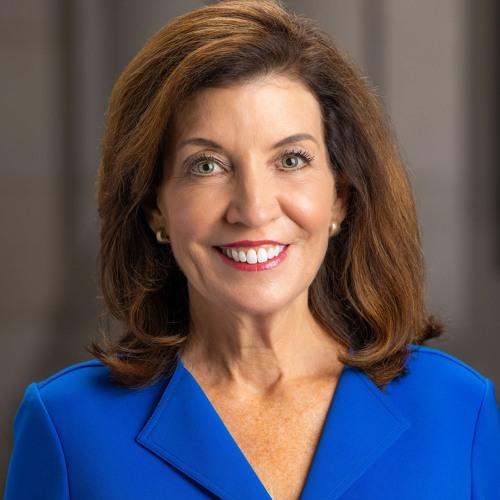In a bid to address pressing social and infrastructural challenges, the recently introduced One Big Beautiful Bill Act has sparked a heated dialogue among New York’s political leaders. Governor Kathy Hochul and Congressman Hakeem Jeffries are expressing significant concerns regarding the potential impacts of this comprehensive legislative proposal. As discussions unfold, both leaders highlight the need for careful consideration of the bill’s implications on public services, economic growth, and community welfare. Spectrum News delves into the nuances of this legislation, the reactions it has garnered, and the broader questions it raises about the future direction of state and national policies.
Hochul and Jeffries Express Worries Over One Big Beautiful Bill Acts Economic Implications
In recent discussions, New York Governor Kathy Hochul and Rep. Hakeem Jeffries have highlighted their apprehensions regarding the economic consequences of the proposed One Big Beautiful Bill Act. Their concerns stem from the bill’s ambitious initiatives aimed at infrastructure and social welfare programs, which could significantly reshape fiscal responsibilities at both the state and federal levels. The leaders express worries that while the act may drive immediate job creation, it could inadvertently lead to long-term challenges including:
- Inflationary Pressures: Increased government spending might exacerbate inflation concerns, impacting everyday costs for consumers.
- Debt Concerns: The potential burden placed on future generations due to higher public debt linked to expansive funding requirements.
- Resource Allocation: Uncertainties regarding how efficiently funds will be allocated and whether they will achieve promised outcomes.
Furthermore, Hochul and Jeffries underscore the need for comprehensive analysis and careful planning before committing to the path outlined in the One Big Beautiful Bill Act. They suggest that stakeholders should engage in rigorous economic forecasting and explore alternative funding methods. To illustrate their points, they have compiled a brief overview of possible economic impacts versus outlined benefits:
| Pros | Cons |
|---|---|
| Job creation in construction and renewable energy sectors | Increased taxes or cuts in other services to finance the bill |
| Modernized infrastructure leading to increased efficiency | Long-term financial commitments could strain budgets |
| Strengthened social programs improving quality of life | Uncertainty on fund distribution and management |
Analysis of Potential Social and Environmental Consequences of Proposed Legislation
The proposed One Big Beautiful Bill Act has elicited a range of reactions among lawmakers, particularly from Governor Kathy Hochul and Representative Hakeem Jeffries, who have raised concerns about the possible social and environmental consequences of the legislation. Critics argue that while the Act promises significant funding for infrastructure improvements, it may inadvertently exacerbate issues such as gentrification and displacement within vulnerable communities. Some potential impacts identified include:
- Economic Displacement: Increased property values may push low-income residents out of their neighborhoods.
- Environmental Degradation: Rapid development without proper checks could lead to habitat destruction and increased pollution.
- Social Inequality: Benefits of the Act might disproportionately favor affluent areas, leaving marginalized groups behind.
Furthermore, Hochul and Jeffries highlight the necessity for comprehensive evaluations before implementation. Stakeholders emphasize that thorough assessments should prioritize community engagement to ensure that legislative advancements align with the needs of those most affected. A recent survey compiled by local advocacy groups illustrates the concerns surrounding the bill:
| Concern | Community Feedback (%) |
|---|---|
| Fear of Displacement | 75% |
| Desire for Environmental Protections | 82% |
| Need for Inclusive Development | 90% |
These findings underscore the urgency for legislators to engage with community members to address their concerns while shaping a balanced approach to development and sustainability. Without proactive measures in place, the fear is that the One Big Beautiful Bill Act could transform into a tool that favors the few at the expense of the many.
Recommendations for Mitigating Risks and Enhancing Benefits of One Big Beautiful Bill Act
To address potential risks associated with the One Big Beautiful Bill Act and ensure its positive impact on constituents, stakeholders must adopt a proactive approach. Key recommendations include the establishment of a transparent oversight mechanism to monitor fund allocations, while actively engaging community input to identify priority areas for investment. This could involve:
- Regular public forums: To gather feedback and adjust initiatives based on community needs.
- Empowering local organizations: To play a pivotal role in the implementation of projects, ensuring they are in line with regional priorities.
- Creating a clear reporting framework: To track progress and outcomes related to the bill’s objectives.
Additionally, stakeholders should consider establishing partnerships with academic institutions and non-profits to leverage research and best practices. This could provide valuable data to inform decision-making and improve effectiveness. A collaborative approach can also help mitigate divisive views on the bill, fostering a sense of shared ownership across various demographics. Effective strategies might include:
| Strategy | Expected Outcome |
|---|---|
| Engagement with local leaders | Enhanced communication and trust within communities |
| Independent audits | Increased accountability and transparency |
| Pilot programs in diverse regions | Data-driven adjustments before full-scale implementation |
The Way Forward
the concerns raised by Governor Kathy Hochul and Congressman Hakeem Jeffries regarding the potential impacts of the One Big Beautiful Bill Act underscore the complexities involved in navigating large-scale legislation. As stakeholders from various sectors voice their opinions, the dialogue surrounding this pivotal bill will likely play a critical role in shaping its final form. With economic, environmental, and social implications at stake, both Hochul and Jeffries emphasize the necessity for careful consideration and constructive debate. As the legislative process unfolds, Spectrum News will continue to monitor developments, keeping the public informed on this significant issue that could affect millions of lives across the state and beyond.
